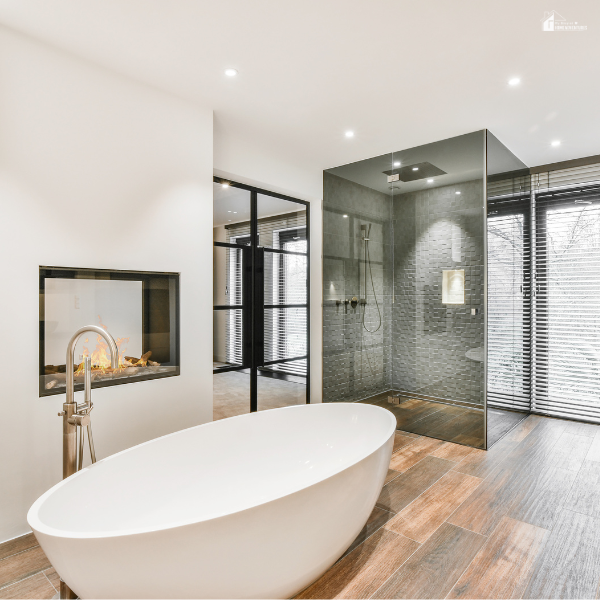Home Care Essentials: How to Balance Repairs, Maintenance, and Upgrades
This post may contain affiliate links which might earn us money. Please read my Disclosure and Privacy policies hereHomes in warm regions deal with long periods of high heat, which puts steady pressure on cooling systems. People in Phoenix, AZ, often try to keep things running without letting repair tasks pile up. Simple routines and clear plans make this easier.
A balanced approach helps you handle repairs, routine care, and upgrades without stress. When you understand what your home needs in a hot climate, everything feels more manageable.

Here are some practical steps for staying ahead of issues and keeping comfort stable throughout the year:
Start With an Honest Look at Your Home’s Current Condition
Start with a slow walk through your home. Look at vents, windows, and anything that affects airflow or indoor comfort. Check areas that tend to warm up fast. Make a simple list of what needs attention. Focus on things you notice right away, like unusual noise from cooling units or warm spots in certain rooms.
Look at filters, seals, and small details that change how your space feels. This quick review gives you a clear starting point. You also begin to see which tasks need fast action and which ones can wait. A small list helps you plan the next steps.
When Cooling Systems Need More Than a Quick Fix
Some cooling problems need more than a small repair, especially during long heat waves. This is often the point where AC replacement in Phoenix becomes the practical choice, especially when an older unit struggles daily. Many local service teams in Phoenix, AZ, offer full system checks, sizing help, and support with choosing modern units.
They also guide people through installation and explain how each option works in a hot climate. Their cooling services help you decide when repair no longer solves the issue.
Set Up a Simple Home Maintenance Routine
A steady routine helps your home stay comfortable through heat changes. Break tasks into small steps. Clean or replace filters often. Wipe vents and check for dust build-up. Look at window seals and make sure warm air does not drift in. Test detectors. Check drains and faucets.
Keep notes so you remember what you handled last time. These habits protect your home from surprise issues. Regular care also helps cooling systems run with less strain. A routine does not need to feel heavy. Small tasks done at the right time keep everything stable.
Handle Repairs Before They Grow
Small repairs feel easy when you catch them early. Listen for odd sounds from cooling units. Check for leaks around windows, sinks, and outdoor areas. Tighten loose fixtures and replace worn parts. Clear drain lines so moisture does not build up.
Fix small issues before they interrupt your day. Keep simple tools in one spot so you can handle minor tasks fast. This approach helps you stay ahead of problems. A quick fix saves time and prevents costs from rising. Staying alert helps you maintain a calm and steady home environment.
Know When Upgrades Make Life Easier
Some upgrades make an instant difference in comfort. New lighting helps reduce unnecessary heat. Updated cooling features offer smoother control and steady comfort. A modern thermostat adjusts settings based on your routine.
Better insulation keeps rooms cooler during long warm stretches. Even small changes improve how a space feels.
These upgrades also reduce how often repairs show up. Start with changes that affect comfort daily. Choose features that match the size of your home. A good upgrade does not need to feel complicated. A few small improvements support a smoother experience inside your home.

Plan Your Budget With Simple Categories
A clear budget helps you stay organized. Create three lists: repair tasks, routine care, and future upgrades. Repairs matter most, so they go first. Routine care supports daily comfort. Upgrades build long-term ease. Assign a small amount each month to basic tasks.
Set aside another amount for bigger changes later in the year. This makes the process feel easier to manage. You decide what to handle now and what can wait. A simple plan helps you avoid sudden stress. Budgeting this way keeps everything balanced and predictable.
Make Energy Efficiency Part of Your Plan
Small steps help your cooling system work with less strain. Seal gaps around windows and doors. Add insulation where rooms warm up fast. Clean outdoor units so airflow stays smooth. Adjust thermostat settings during cooler hours. Shade windows during peak heat. Keep vents open and clear.
These steps make your home easier to cool and reduce pressure on your system. You create a steady indoor temperature without long adjustments. A few thoughtful habits help you stay comfortable during long, warm months. This approach supports stability and makes cooling more effective.
Track What You Fix, Upgrade, and Maintain
A simple record of home tasks helps you see progress. Write down repairs and note when they happened. Add comments about how your home felt before and after each fix. Record routine care and upgrades. This helps you spot patterns, like areas that need repeated attention.
A small notebook or digital list works well. Review your notes each season. Adjust your plans if something feels off. This habit keeps your tasks clear and your expectations realistic. Tracking your efforts also builds confidence because you can see what you already handled and what comes next.
Prepare for Seasonal Shifts
Seasonal changes affect how your home feels and what it needs. Before the heat rises, check your cooling system and clear debris around outdoor units. Test airflow in each room. During cooler periods, focus on indoor tasks and small upgrades.
Match your activity to the season so everything feels easier. Look at your task list and choose what fits each time of year. This keeps tasks from piling up. A seasonal plan gives you steady direction. You stay prepared, and your home stays comfortable throughout shifting weather.
Balancing repairs, routine care, and upgrades helps you keep a stable and comfortable home. A steady plan makes each task easier. Simple habits protect your home from sudden issues. Small improvements help you stay cool during long warm periods.
Early repairs save time and prevent stress. With a clear routine, home care becomes manageable. Let this guide support your approach as you build comfort and stability throughout the year.








